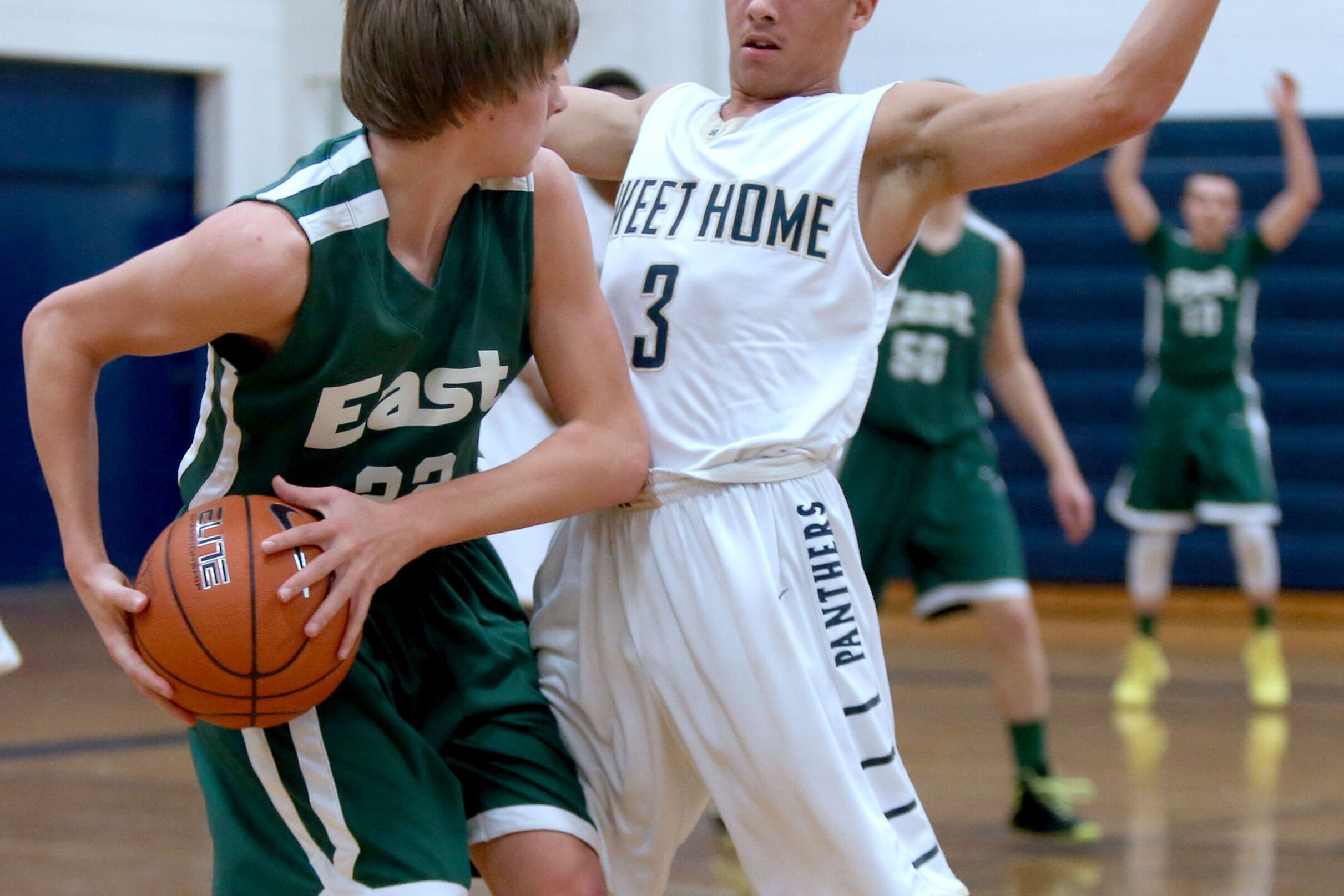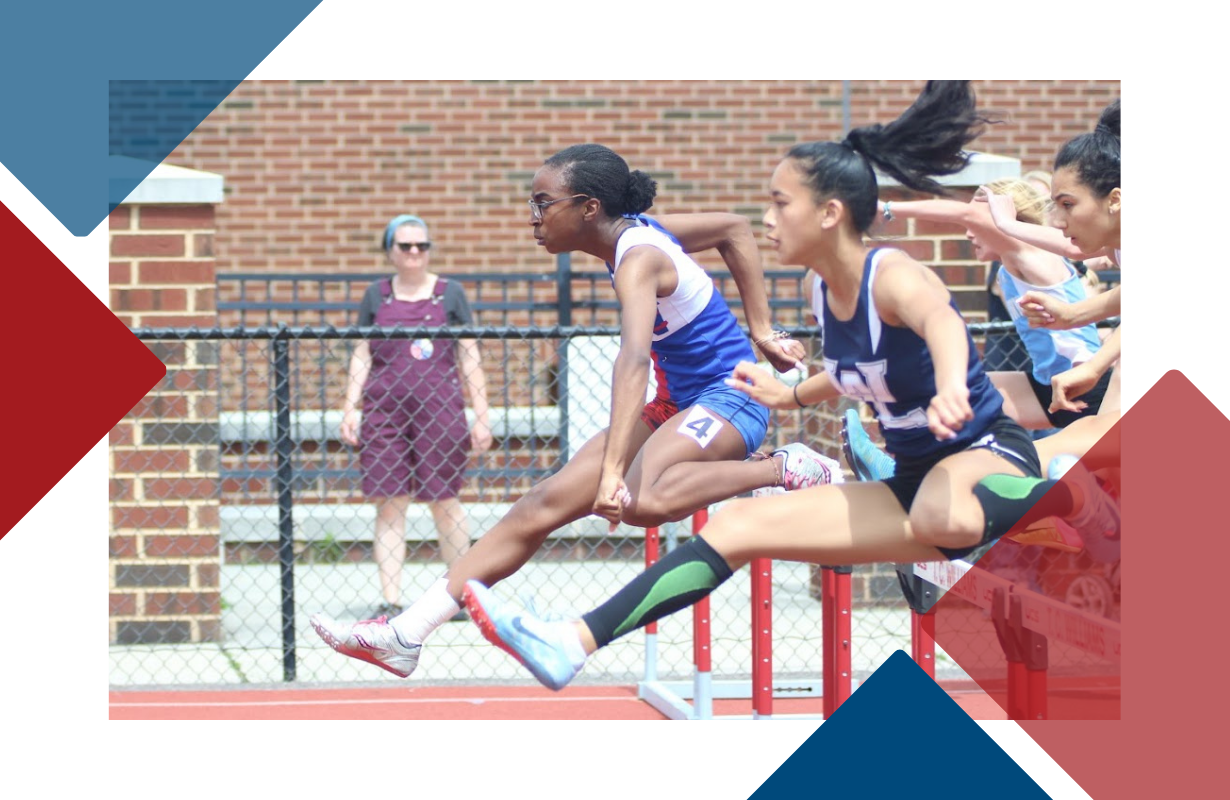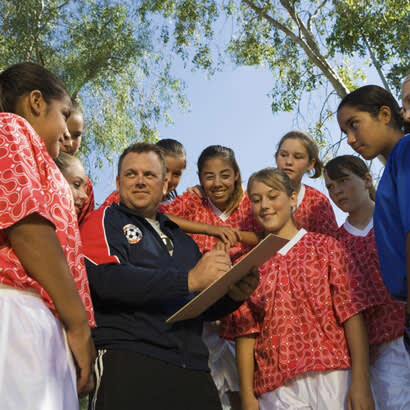For a nation suffering from pandemic fatigue and eager for a return to normal life, the results of a survey released last week by the University of Wisconsin [PDF] seem almost to be too good to be true: That there is virtually no extra risk of coronavirus transmission from playing sports. More than 30,000 athletes in eight sports at hundreds of schools across the state participated in 16,000 practices and 4,000 games, and only one of them contracted COVID-19 through high school sports.
Just one, despite all the heavy breathing at close contact and use of shared equipment.
National media outlets including the Associated Press quickly wrote stories with headlines that cut to the chase (“UW study: High school sports have not spread the coronavirus”). Sports administrators with beleaguered budgets and major scheduling challenges celebrated, as did critics of Centers for Disease Control and Prevention recommendations on social distancing and other virus mitigation practices.
Hold up, say infectious disease experts. The conclusion is probably too good to be true.
Six medical experts contacted by the Aspen Institute expressed significant skepticism after reviewing the three-page summary document by the University of Wisconsin’s School of Medicine and Public Health, which concluded that its survey suggests “participation in sports is not associated with an increased risk of COVID-19 among Wisconsin high school student-athletes.”
UPDATE: Robert Golden, dean of Wisconsin’s School of Medicine and Public Health, told The Wall Street Journal that the views of the study’s lead researcher don’t represent the opinions of the university, that the study hasn’t been peer-reviewed, and that its design has limitations. “High schools across the country are working to make the best decisions they can regarding the health and safety of their athletes, and we do not believe this report should play a major role in shaping their decisions,” Golden said.. The National Federation of State High School Associations removed from its website an article highlighting the study and told The Wall Street Journal that it’s reevaluating the research.
Researchers at Wisconsin collaborated with the Wisconsin Interscholastic Athletic Association to collect the data, which informed findings that stand in stark contrast to some reports elsewhere in the country that increasingly tie youth sports activity to COVID-19 transmission.
“Although I would like for (UW’s) conclusions to be true, it is not consistent with many reports nationwide, including here in Atlanta, of clusters of COVID-19 cases in student-athletes,” said Dr. Neel Gandhi, a professor of infectious diseases, epidemiology and global health at Emory University.
Just last week, the Shelby County (Tennessee) Health Department shared that out of the first 500 positive COVID-19 cases of students and school staff in the county, 83% traced back to sports, according to The Memphis Commercial Appeal. The department’s chief of epidemiology said these cases involved either a player or a coach on one more team at secondary schools and universities, involving the sports of football, basketball, cheerleading, soccer and volleyball.
This week, Minnesota health officials said they have connected more than 3,400 cases to sports, requiring 7,200 households to isolate. The state infectious disease expert said 593 of those cases have been traced to high school athletes and 309 to middle school athletes.
Project Play, the signature initiative of the Aspen Institute Sports & Society Program and which aims to build healthy communities through sports, recognizes the considerable value of bringing back high school sports. Sports can provide physical, social and emotional benefits to youth, especially those in communities of need. But those desires need to be balanced with public health interests, and the science upon which sports decisions are made needs to be good.
Infectious disease experts say it’s hard to draw any useful conclusions from the University of Wisconsin research, which has not been peer-reviewed and was based on self-reported data. In the absence of testing for all athletes or any system of contact tracing, all that athletic directors at participating schools could do was share data with assumptions made about how any athlete who disclosed they had tested positive might have contracted the virus.
“There’s a big difference between a lack of in-competition transmission and saying sports themselves do not spread COVID-19,” said Zach Binney, Emory University epidemiologist. “We have example after example of outbreaks on college football, pro football, high school football, ice hockey and MLB teams that may not have had anything to do with the competition per se. But unless you’ve figured out how to have a sports season with only the games and no other physical contact or gathering, it’s not really that relevant.”
Dr. Drew Watson, who specializes in primary care sports medicine at the University of Wisconsin, led the research, which he said will be expanded nationally in the next couple of weeks. He has also been collecting self-reported data from club sports programs across the country as an expansion of a soccer survey that also claims minimal incidence of the virus.
“Our hope is to be able to insert some amount of useful information into the discussion,” said Watson, a team physician for the University of Wisconsin athletics department. “I try to be upfront about the inherent limitations of this type of survey data collection, but as we replicate it and find similar results, my confidence grows that what we are measuring is real.”
Medical experts interviewed by the Aspen Institute agree that understanding transmission of the virus through sports participation is an important area of study. But they expressed concern about the process and conclusions based on their review of the research, which Watson said he plans to submit for peer review.
Dr. Andrew Stolbach, an emergency physician and faculty member at Johns Hopkins University School of Medicine, praised surveillance efforts but cautioned not to rely on the Wisconsin study “to warn us if high school sports participation was leading to an increase in infections among kids, contributing to community spread, or putting kids at risk of longer-term health issues.”
In recent weeks, concerns about the health impacts on children have only grown, as have case reports. Children now represent 10.9% of reported cases nationwide, up from just 2.2% in April, according to the American Academy of Pediatrics.
“We still do not know much about the long-term effects of COVID-19 in young populations,” said Dr. Maria Elena Bottazzi, co-director of the Texas Children’s Hospital Center for Vaccine Development, who also expressed concern about the conclusions of the Wisconsin study.
What the research does and doesn’t say
Surveys were completed by 207 Wisconsin high schools that had restarted sports. The summary document said 271 cases of COVID-19 were reported among athletes for a rate of 901 cases per 100,000 children. By contrast, the document said the rate for all Wisconsin youth ages 14-17 was 1,035 cases per 100,000, as reported by the Wisconsin Department of Health Services.
“Our data can really only speak broadly to the incidence among athletes relative to the background incidence across the state,” Watson said. “Based on the reported sources of infection among the athletes, it seems like most are contracting COVID from outside of athletics and that the incidence in athletes may simply be a representation of the background incidence without a significant added effect of sports participation.”
However, Bottazzi noted that the research said at least 30% of the reported cases did not have an identified source. She said that raises concern since it’s hard to verify the results and extrapolate that they are not attributed to sport activities. Watson said the proportion of cases without an identified source is consistent with the degree of spread in the state and upper Midwest.
Wisconsin’s research attributed 55% of known cases among athletes to household contact. Gandi, the Emory University infectious disease doctor, said this analysis is “flawed” since it’s difficult to determine the directionality of transmission. “Just because someone else in the household is positive, it doesn’t mean that that family member infected the student,” he said. “The opposite is just as likely – that the student became infected, perhaps due to athletics, and then took the infection home to their family members.”
This month, the CDC published a report that an outbreak occurred due to a recreational ice hockey game from a rink in Tampa, Florida. In the five days after the game, 15 people (14 of the 22 players and a rink staff member) experienced COVID-19 symptoms and 13 of the 15 people tested positive.
The inclusion of non-players in that case study underscores another key factor in evaluating the spread of the virus through organized sports – games include spectators and officials as well.
“I think we have to be very diligent about recognizing that risk reduction protocols for sports should be directed at everyone involved, not just young athletes,” Watson said.
The four-week timeframe of the Wisconsin study (Sept. 6 to Oct. 3) is relatively short given that the virus has an incubation period of up to two weeks, Gandhi said. “Typically, we have seen a rise in caseload occur six to eight weeks after there was a change in how individuals were mixing,” he said.
Epidemiologist Jayme Murphy, director of insights and business analytics at the National Sports Center in Minnesota, noted that the case rates for all Wisconsin youth more than doubled during the period of the survey. Even if cases from sports simply mirror the general population, “you’re just adding cases as rates are exploding,” Murphy said. “Having 1,420 cases per 100,000 youth for cheer and dance (as identified in the research) feels high to me in just a 30-day timeframe.”
Wisconsin’s research also fails to consider other potential factors that may affect the spread of the virus, said Bruce Y. Lee, professor of Health Policy and Management at City University of New York School of Public Health and executive director of Public Health Computational and Operation Research.
“What if kids who were playing sports also came from schools, neighborhoods and families that had lower risk for COVID-19 in general?” he said. For example, Lee said, schools that resumed sports may have been more likely to put in place comprehensive prevention measures and some schools may have more resources to control the spread than others.
Lee said the research treats playing sports as one monolithic activity without identifying the degree to which sports were resuming while recognizing that coaches and players may become more relaxed with protocols as seasons progress. Wisconsin doesn’t provide characteristics of who responded and the differences between survey responders and non-responders.
“Could their symptoms or fear of stigma have made them less likely to have responded?” Lee asked. “Also, we really need more info on the school sample. How was this chosen? What are the characteristics of the schools? … Comparing students playing sports versus those who didn’t in a school with very few cases is an essentially meaningless analysis.”
The Wisconsin document said that of the 209 COVID-19 cases among players with a known source, only one case was attributed to participation in sports. Watson said athletic directors at each high school self-reported the data and schools were not asked to specifically report how cases were determined or sources were traced.
Actual contact tracing results from local health departments and trained infectious disease experts would provide stronger research than best guesses from athletic trainers, said Binney, the epidemiologist at Emory.
Self-reporting in high school sports pose challenges
While many high schools are undoubtedly trying to follow confusing and proper protocols to play, we’re learning that relying on self-reporting can be fraught with problems. The Minneapolis Star Tribune recently reported that students are hiding COVID-19 cases and symptoms in order to keep sports going as cases spike in Minnesota. Susan Klammer, an epidemiologist with the Minnesota Department of Health, told the Star Tribune that resistance to testing or quarantining after COVID-19 exposure has become more pronounced, and in some cases hostile, in the period since the Minnesota State High School League restarted sports.
Klammer said police have been called in cases where health workers were threatened for recommending that students quarantine, and students were threatened and harassed by their peers after seeking COVID-19 testing. The article said health officials have been notified of schools where groups of students have made pacts not to get tested, and to keep quiet if they think they are sick or have been exposed to the virus.
Watson acknowledged that self-reporting is a limitation of Wisconsin’s research. “I would like to think that individuals would not deliberately under-report or misrepresent information, but I can’t exclude that possibility,” he said.
The research was published as Wisconsin faces one of the worst outbreaks within the U.S., trailing only North Dakota, South Dakota and Montana. Since the beginning of October, the seven-day average of new cases has risen by almost 40% and COVID-19 deaths have increased by more than 95%.
According to the Associated Press, about 70% of Wisconsin high school football programs opted to play this fall. The state allowed districts that didn’t feel comfortable playing in the fall to hold an alternative spring season. Over the last week, the 16-school Badger Conference and the Big Eight have canceled winter sports competitions but allowed member schools to seek out nonconference opponents.
Binney said there’s a strong tendency for people involved in sports to believe that COVID-19 can’t be transmitted by their close contact. “I’m always open to being proven otherwise – I’m a scientist – but I think we have to err on the side that it can,” he said. “This three-page document doesn’t do much to persuade me it doesn’t. … Close contact with heavy breathing is close contact with heavy breathing.”
He said he’s not saying don’t play sports. “But I’m pushing back against a very dangerous trend that I see developing where people somehow rationalize their close contact is going to be OK, even if everything else we know about the virus suggests it’s risky.”
Do you have a topic that you would like Project Play to explore in future COVID-19 youth sports coverage? Email Jon Solomon at jon.solomon@aspeninstitute.org.
























